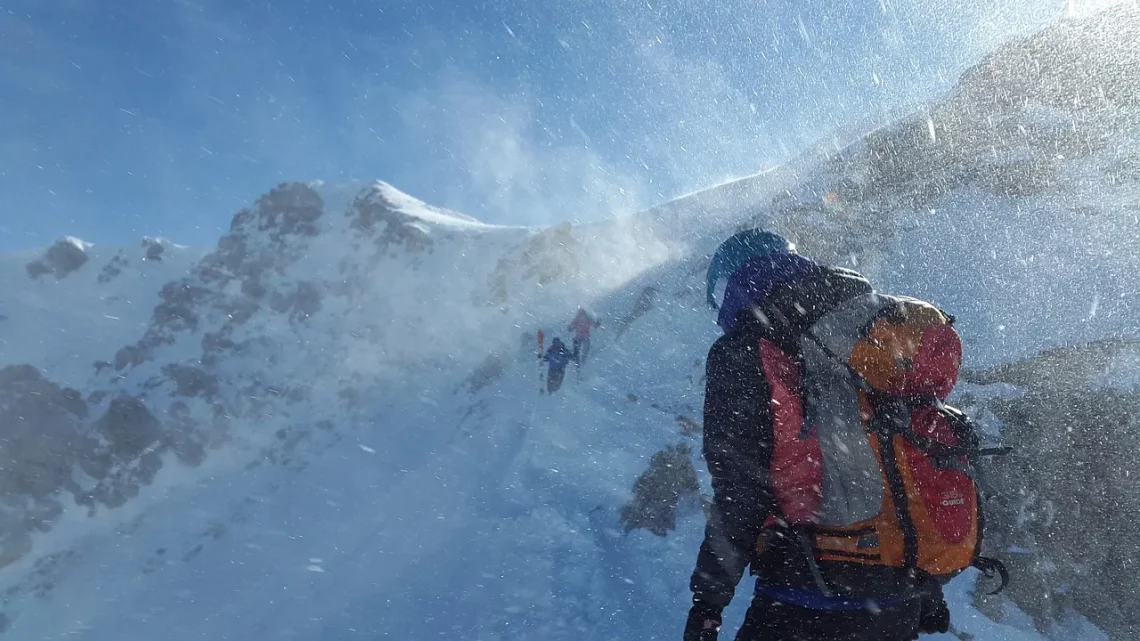
The Art of Hand Holds: Techniques for Every Climber
Climbing is a captivating sport that requires both physical strength and mental acuity. The ability to navigate various terrains and tackle challenging routes depends heavily on mastering the art of hand holds. Hand holds are not just grips; they are the climber’s connection to the rock, the climbing wall, or bouldering surface. Each hold presents unique challenges and opportunities for climbers, influencing their technique and strategy.
Understanding how to effectively use different hand holds can significantly enhance a climber’s performance, regardless of their skill level. The subtleties involved in gripping, positioning, and transitioning between holds can make the difference between a successful ascent and a frustrating fall. While some holds may seem straightforward, nuances like body positioning, momentum, and grip strength play crucial roles in effectively utilizing them.
As climbers ascend, their hands must adapt not only to the type of holds but also to the changing dynamics of their body movement. Whether you’re climbing indoors or outdoors, refining your hand-hold technique is essential for improving your overall climbing ability. This article delves into various types of hand holds, offering insights and techniques that can help climbers optimize their grip and maximize their performance on the wall.
Understanding Different Types of Hand Holds
Every climbing route features a variety of hand holds, each designed to challenge climbers in different ways. The primary categories of hand holds include crimps, slopers, jugs, pinches, and pockets. Each type requires a specific technique and grip style, making it essential for climbers to familiarize themselves with these holds.
Crimps are small, edge-like holds that require climbers to curl their fingers and apply pressure to the hold’s edge. They demand a strong grip and precise finger strength. Proper technique involves keeping the wrist straight and engaging the core to maintain balance while relying heavily on finger strength. Climbers should practice using crimps to build finger strength and refine their technique, as these holds are prevalent in many climbing routes, especially in sport climbing.
Slopers, on the other hand, are large, rounded holds that demand a different approach. Unlike crimps, slopers require climbers to distribute their weight evenly across the hold. The technique focuses on body position and friction rather than grip strength. Climbers must engage their entire body, using their feet effectively to maintain balance and leverage. When using slopers, it’s vital to keep your body close to the wall to maximize contact and minimize slipping.
Jugs are larger, more positive holds that allow for a comfortable grip. They provide a great opportunity for climbers to rest and recover during climbs. The technique for jugs involves using an open-handed grip, allowing for maximum hand contact. Climbers can use jugs to strategize their next moves, making them an essential hold for both beginners and experienced climbers.
Pinches are another type of hand hold that require a different gripping technique. Climbers must squeeze the hold between their thumb and fingers, utilizing strength from both to maintain grip. Pinches often require significant upper body strength and can be physically demanding, but they also help climbers develop grip strength and overall hand agility.
Lastly, pockets are holds with indentations that can accommodate one or more fingers. These require precise finger placement and can be tricky for climbers who lack finger strength. Mastering pockets involves careful finger positioning and a solid understanding of body weight distribution, as improper technique can lead to slips or falls.
By understanding the various types of hand holds and their unique techniques, climbers can enhance their performance and tackle a broader range of climbing challenges.
Techniques for Maximizing Grip Strength
Grip strength is a crucial component of effective climbing, influencing how well climbers can hold onto different types of hand holds. There are several techniques that climbers can implement to maximize their grip strength, ensuring they can tackle challenging routes with confidence.
One of the most effective ways to improve grip strength is through specific training exercises. Exercises like dead hangs, where climbers hang from a bar or hold for extended periods, can significantly boost grip strength. Incorporating variations, such as using different holds or adding weight, can enhance the training effect. Another effective exercise is the pinch grip, where climbers practice holding onto a pinch block or similar apparatus, which targets the muscles involved in maintaining a pinch grip on holds.
Climbers should also focus on finger-specific workouts. Utilizing fingerboards can help climbers target their forearm and finger muscles directly. Adjusting the grip width and the types of holds on the fingerboard can provide varied challenges, allowing climbers to develop overall hand strength.
In addition to strength training, proper warm-up techniques are essential for preventing injuries and ensuring optimal performance. Dynamic stretching and mobility exercises help prepare the hands and fingers for the demands of climbing. It’s crucial to include exercises that promote flexibility and mobility in the hands, wrists, and forearms, as these areas play a pivotal role in grip performance.
Another important technique involves focusing on body positioning and weight distribution while climbing. Proper body alignment can reduce the strain on hands and fingers, allowing climbers to conserve energy and maintain grip strength longer. Engaging the core and using the legs effectively can help shift weight away from the hands, enabling climbers to hold on longer to demanding grips.
Lastly, mental training can also influence grip strength. Visualization techniques can help climbers mentally prepare for specific holds and movements, enabling them to execute techniques with greater confidence and precision.
By combining targeted strength training, proper warm-up routines, and effective body positioning, climbers can enhance their grip strength and improve their overall climbing performance.
Transitioning Between Hand Holds
Transitioning between hand holds is a skill that often defines a climber’s success on challenging routes. The ability to move seamlessly from one hold to another requires practice, precision, and an understanding of body mechanics. Developing this skill can dramatically enhance a climber’s efficiency and fluidity on the wall.
One fundamental technique for effective transitions is maintaining constant tension in the body. As a climber prepares to move from one hold to another, they should focus on keeping their core engaged and their body close to the wall. This position allows them to maintain balance and control, reducing the risk of slipping or losing grip.
Timing is another critical element in transitioning between holds. Climbers should practice identifying the right moment to make a move, ensuring they have a stable base and sufficient grip on their current hold before reaching for the next one. This often involves a combination of visual assessment and muscle memory, where climbers learn to recognize the best moments to shift their weight and reach.
Footwork plays a significant role in successful transitions as well. Effective foot placement can provide the necessary support and balance, allowing climbers to maintain control as they reach for the next hand hold. Climbers should practice precise foot placements, ensuring their feet are positioned to support their weight distribution effectively.
Furthermore, climbers can enhance their transitioning skills through bouldering and route climbing. Bouldering, in particular, encourages climbers to practice dynamic movements and quick transitions as they face short, challenging problems. This style of climbing allows for experimentation with different techniques and styles, fostering adaptability and confidence in transitioning between holds.
Finally, mental preparation is crucial in mastering transitions. Climbers should visualize their movements and practice mindfulness while climbing, focusing on their body mechanics and the positioning of their hands and feet. This mental clarity can significantly enhance their ability to transition smoothly between holds.
By honing their transitioning skills through practice, body awareness, and mental preparation, climbers can improve their overall efficiency and performance on the wall.
Overcoming Common Challenges with Hand Holds
Climbing presents various challenges, especially when it comes to mastering hand holds. Many climbers experience difficulties with specific holds or transitions, which can impact their performance and enjoyment of the sport. Recognizing common challenges and implementing strategies to overcome them is essential for growth as a climber.
One common challenge is dealing with fatigue, especially during prolonged climbs. When climbing on demanding routes, climbers often find their grip strength waning, making it difficult to maintain holds. To combat fatigue, climbers should focus on their breathing and maintain a steady rhythm. Incorporating rest periods, even on the wall, can help conserve energy and reduce overall fatigue.
Another challenge climbers face is fear of falling, particularly when attempting difficult holds or transitions. This fear can hinder performance, leading to hesitancy and poor decision-making. Climbers can work on overcoming this fear through practice and exposure. Engaging in controlled falls while bouldering or working with a belayer can help climbers build confidence and reduce anxiety.
In addition to psychological challenges, physical limitations can also pose obstacles. Climbers with less upper body strength may struggle with certain holds. Targeted strength training can help address these limitations, allowing climbers to build the necessary strength to tackle challenging routes.
Lastly, environmental factors can also affect climbing performance. Outdoor climbing often presents unique challenges such as varying rock conditions, weather, and safety concerns. Climbers should familiarize themselves with their climbing environment, ensuring they understand how to adapt their technique to suit different conditions.
By recognizing and addressing these common challenges, climbers can improve their overall performance and enjoy a more fulfilling climbing experience.
In conclusion, mastering the art of hand holds is essential for climbers of all levels. By understanding different types of holds, maximizing grip strength, practicing effective transitions, and overcoming common challenges, climbers can significantly enhance their skills and performance. Embracing these techniques not only leads to improved climbing ability but also fosters a deeper appreciation for the sport and its intricacies.
**Disclaimer**: This article is not a substitute for professional medical advice. If you have any health concerns or medical issues, please consult a qualified healthcare provider.




